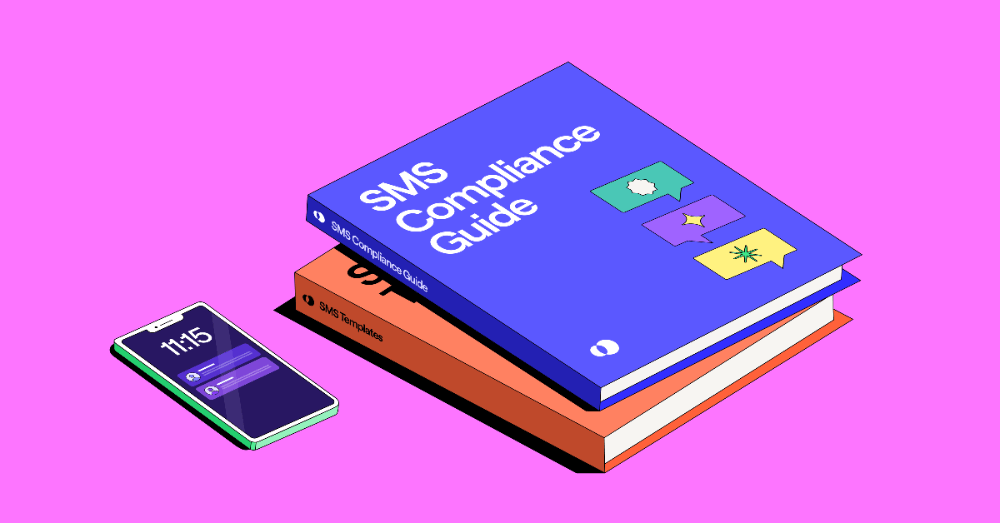📑Table of Contents:

Text message marketing is one of the most powerful ways to reach customers. It is fast, personal, and effective. But with this power comes responsibility. Businesses must follow strict compliance rules to avoid fines and build trust with their audience. Two major areas every marketer must understand are 10DLC registration and the TCPA rules.
If you want to run successful SMS campaigns, compliance is not optional. It protects both your business and your customers. This guide will explain what 10DLC and TCPA mean, why they matter, and how you can stay compliant while still running engaging campaigns.
Why SMS Compliance Matters
SMS is a permission-based channel. Customers expect respect for their privacy and choices. If businesses ignore compliance, the risks are high. They may face lawsuits, carrier blocking, or heavy penalties. More importantly, they risk losing customer trust.
When you follow the rules, you do more than just avoid fines. You create a foundation of trust. Customers who feel safe are more likely to engage with your messages. In the long run, compliance is good for both reputation and sales.
What is 10DLC?
10DLC stands for “10-digit long code.” It is a system created by carriers in the United States to ensure businesses use standard phone numbers for SMS marketing. Unlike toll-free numbers or short codes, 10DLC uses regular-looking numbers that build familiarity with customers.
The main goal of 10DLC is to reduce spam and improve deliverability. Carriers now require businesses to register their 10DLC numbers, share details about their campaigns, and declare how they collect consent. This helps carriers filter out bad actors and keep text messaging a safe space.
How 10DLC Registration Works
Registration is a mandatory step. Businesses must provide:
- The brand or company name.
- The type of messages they plan to send.
- The method they use to collect opt-in consent.
Carriers then assign a “trust score.” That score impacts how many messages you can send per day. Higher trust scores mean better throughput and fewer delivery issues.
Without registration, carriers may block your messages. So, taking the time to register is a critical part of any SMS strategy.
What is TCPA?
TCPA stands for the Telephone Consumer Protection Act. It is a federal law passed in 1991 to protect consumers from unwanted calls and messages. For SMS, TCPA rules are very clear: you must get consent before sending marketing texts.
Consent must be explicit. Customers should know what they are signing up for, how often they will receive messages, and how they can opt out. For example, “Sign up to receive weekly offers via text. Reply STOP to unsubscribe.”
Violating TCPA can be extremely costly. Penalties can reach $500–$1,500 per text message sent without permission. That adds up quickly, especially for mass campaigns.
Key TCPA Requirements for SMS
To stay compliant with TCPA, follow these key rules:
- Get clear written consent before sending texts.
- Provide transparent disclosures about message frequency and purpose.
- Always include an easy way to opt out, such as replying “STOP.”
- Respect opt-outs immediately—never text a customer again after they unsubscribe.
- Keep records of opt-ins as proof in case of disputes.
Following these rules not only keeps you safe but also ensures customers know you respect their privacy.
The Connection Between 10DLC and TCPA
10DLC and TCPA work hand in hand. Carriers enforce 10DLC registration, while federal law enforces TCPA. Together, they make SMS a safer and more trustworthy channel.
Think of it this way: 10DLC ensures the technical side of compliance, while TCPA ensures the legal side. A business cannot ignore either one. Both are necessary for building sustainable SMS campaigns.
Best Practices for SMS Compliance
Understanding the rules is only the first step. You must also put them into practice. Here are some best practices every business should follow:
- Double Opt-In: Ask customers to confirm their subscription with a follow-up text. This provides extra proof of consent.
- Be Transparent: Always tell subscribers what kind of messages they will get. Surprises cause complaints.
- Limit Frequency: Too many messages can feel intrusive. Stick to a schedule customers expect.
- Keep Records: Store opt-in data securely. Documentation can protect you if disputes arise.
- Train Your Team: Make sure your marketing and support staff understand compliance basics.
- Work With Trusted Platforms: Use SMS platforms that follow 10DLC rules and provide compliance tools.
Common Compliance Mistakes to Avoid
Even experienced marketers make mistakes. Some of the most common include:
- Buying phone lists instead of collecting real opt-ins.
- Forgetting to register numbers with 10DLC.
- Sending texts without clear identification of the sender.
- Ignoring opt-out requests or delays in removing numbers.
- Overloading customers with too many texts per day.
Avoiding these mistakes will protect your business from fines and keep customers happy.
The Future of SMS Compliance
Compliance rules will continue to evolve as text messaging grows. Carriers are already increasing their focus on fraud prevention and spam control. Meanwhile, lawmakers are paying closer attention to AI-driven SMS and automated outreach.
Businesses must stay informed and agile. Adapting to new rules quickly will give you an edge over less-prepared competitors. Compliance is not a one-time task—it is an ongoing process.

Final Thoughts
SMS marketing is a powerful tool, but it comes with responsibilities. 10DLC registration ensures your messages reach customers without being flagged as spam. TCPA rules protect your business from legal risks and show respect for customer privacy.
When you combine both, you create an SMS program that is trustworthy, effective, and sustainable. Following compliance best practices is not just about avoiding fines. It is about building stronger, lasting relationships with your audience.
If you want to boost sales and engagement through SMS, compliance is the foundation you must master first.
